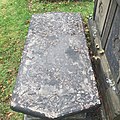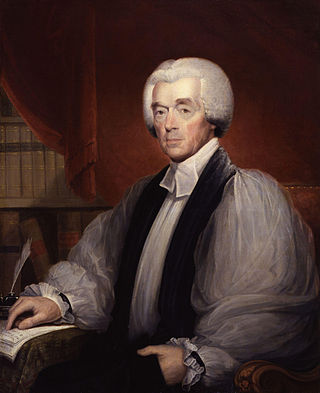
Charles Inglis was an Irish Anglican clergyman and ardent Tory who was consecrated the first Anglican bishop in North America for the Diocese of Nova Scotia. He died at Kingston, Nova Scotia. He is buried in the crypt of St. Paul's Church (Halifax).

Camp Hill Cemetery is a cemetery within Halifax, Nova Scotia, Canada. It is located on Camp Hill, adjacent to Robie Street.

Deadman's Island is a small peninsula containing a cemetery and park located in the Northwest Arm of Halifax Harbour in Nova Scotia, Canada. The area was first used as a training grounds for the British military, and later became a burial ground for dead prisoners of war from nearby Melville Island. In the early 1900s the site became an amusement park before being annexed to the city of Halifax in the 1960s. Though development projects were considered for the site, these plans met with popular protest, and instead Deadman's Island became a heritage park, Deadman's Island Park.

St. Paul's Church is an evangelical Anglican church in downtown Halifax, Nova Scotia, within the Diocese of Nova Scotia and Prince Edward Island of the Anglican Church of Canada. It is located at the south end of the Grand Parade, an open square in downtown Halifax with Halifax City Hall at the northern end.
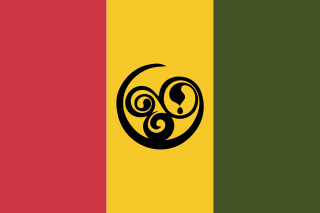
Black Nova Scotians are Black Canadians whose ancestors primarily date back to the Colonial United States as slaves or freemen, later arriving in Nova Scotia, Canada, during the 18th and early 19th centuries. As of the 2021 Census of Canada, 28,220 Black people live in Nova Scotia, most in Halifax. Since the 1950s, numerous Black Nova Scotians have migrated to Toronto for its larger range of opportunities. Before the immigration reforms of 1967, Black Nova Scotians formed 37% of the total Black Canadian population.

Rose Fortune was a child born in or around Philadelphia of runaway slaves. Her parents became Black Loyalists during the American Revolutionary War when they pledged to be loyal to the British Army in exchange for their freedom. At around the age of 10, Rose was among the approximately 3,000 Black Loyalists who sailed from New York City to Nova Scotia in 1783. She had at least three children and is thought to have been married twice. At about 50 years of age she began a business transporting luggage in a wheelbarrow from the Annapolis ferry docks to hotels and houses. By the early 1840s, she was using horse-drawn carriages to convey the luggage. She became the first female police officer in North America when she instituted and enforced curfews to keep the streets safe at night. Fortune is remembered for her business sense, strength, and courage.

John Parr was a British military officer and governor of Nova Scotia. He is buried in the crypt of St. Paul's Church.
Garrison Cemetery is a cemetery located on the grounds of Fort Anne in Annapolis Royal, Nova Scotia, Canada. It is located next to the old Court House, at the intersection of George St. and Nova Scotia Trunk 1.

Richard Bulkeley was an influential administrator in Nova Scotia from 1749 to 1800. Historian Phyllis Blakeley writes that Bulkeley, "assisted 13 governors and lieutenant governors from Cornwallis to Wentworth. In half a century of service he took part in the founding of Halifax, the immigration of New Englanders and loyalists, and the prosperity of the French revolutionary wars." During his lifetime, known for hosting dignitaries and grand parties, he was known as "the Father of the Province." When he died, he was the last surviving settler who arrived with Cornwallis.
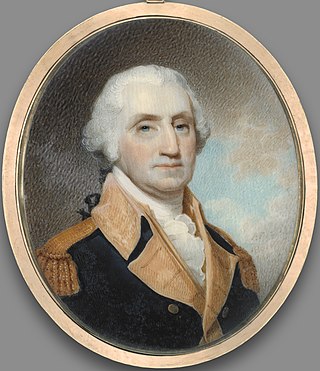
Robert Field (1769–1819) was a painter who was born in London and died in Kingston, Jamaica. According to art historian Daphne Foskett, author of A Dictionary of British Miniature Painters (1972), Field was "one of the best American miniaturists of his time." During Field's time in Nova Scotia at the beginning of the nineteenth century, he was the most professionally trained painter in present-day Canada. He worked in the conventional neo-classic portrait style of Henry Raeburn and Gilbert Stuart. His most famous works are two groups of miniatures of George Washington, commissioned by his wife Martha Washington.

The Little Dutch (Deutsch) Church is the second-oldest building in Halifax, Nova Scotia, Canada, after St. Paul's Church. It was built for the Foreign Protestants, and is the oldest site in Canada associated with Lutheranism. It is a National Historic Site of Canada.

The Carleton is a building on Argyle Street in Halifax, Nova Scotia, built in 1760 as the home of Richard Bulkeley. Apart from two churches, Bulkeley's home is the oldest building in Halifax, Nova Scotia (1760). It was reported to have been made from the ruins of Fortress Louisbourg. Since 1786 his residence has been known as "The Carleton".

John James Snodgrass, was a British military officer, aide-de-camp and son-in-law to Sir Archibald Campbell, 1st Baronet and author. He fought in the Battle of Waterloo. The last seven years of his life were spent in Halifax, Nova Scotia where he died and is buried in the Old Burying Ground.

John Connor (1728–1757) was a mariner who ran the first ferry in Halifax Harbour, Nova Scotia, and was involved in the Attack at Mocodome during Father Le Loutre’s War, which effectively ended the Treaty of 1752.

The Royal Navy Burying Ground is part of the Naval Museum of Halifax and was the Naval Hospital cemetery for the North America and West Indies Station at Halifax, Nova Scotia. It is the oldest military burial ground in Canada. The cemetery has grave markers to those who died while serving at Halifax and were treated at the Naval medical facility or died at sea. Often shipmates and officers had the grave markers erected to mark the deaths of the crew members who died while in the port of Halifax.

Edward Winslow was a loyalist who was a government official in Boston until he moved to Halifax, Nova Scotia in 1776 during the American Revolution. He was the great grandson of Mayflower Pilgrim Edward Winslow. During Father Rale's War, Winslows older brother Josiah was given the command of Fort St. George and was killed by natives of the Wabanaki Confederacy in the Northeast Coast Campaign (1724). He was also the father of loyalist Edward Winslow.
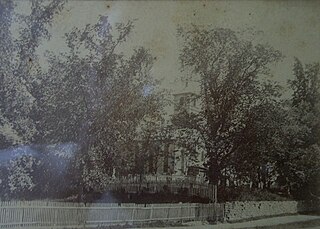
The Old Parish Burying Ground is the oldest protestant cemetery in Windsor, Nova Scotia and one of the oldest in Canada. The graveyard was located adjacent to the first protestant church in Windsor (1788). The oldest marker of Rachel Kelley is dated 1771, twelve years after the New England Planters began to settle the area.

The Province of Nova Scotia was heavily involved in the American Revolutionary War (1776–1783). At that time, Nova Scotia also included present-day New Brunswick until that colony was created in 1784. The Revolution had a significant impact on shaping Nova Scotia, "almost the 14th American Colony". At the beginning, there was ambivalence in Nova Scotia over whether the colony should join the Americans in the war against Britain. Largely as a result of American privateer raids on Nova Scotia villages, as the war continued, the population of Nova Scotia solidified their support for the British. Nova Scotians were also influenced to remain loyal to Britain by the presence of British military units, judicial prosecution by the Nova Scotia Governors and the efforts of Reverend Henry Alline.

Timothy Hierlihy (1734–1797) was a British officer who protected the British coal mines at Sydney Mines, Nova Scotia from attacks by American privateers. He also was the first British settler of Antigonish, known as the "founder of Antigonish." Hierlehy also became the commander of the Royal Nova Scotia Volunteer Regiment.

St. Peter's Cemetery, later St. Mary's Cemetery, is the oldest Catholic cemetery in Halifax, Nova Scotia, containing an estimated 3,000 graves dating from 1784 until 1843. It is located in Downtown Halifax at the corner of Spring Garden Road and Grafton Street under a parking lot beside the St. Mary's Basilica and owned by the Roman Catholic Archdiocese of Halifax-Yarmouth.

























